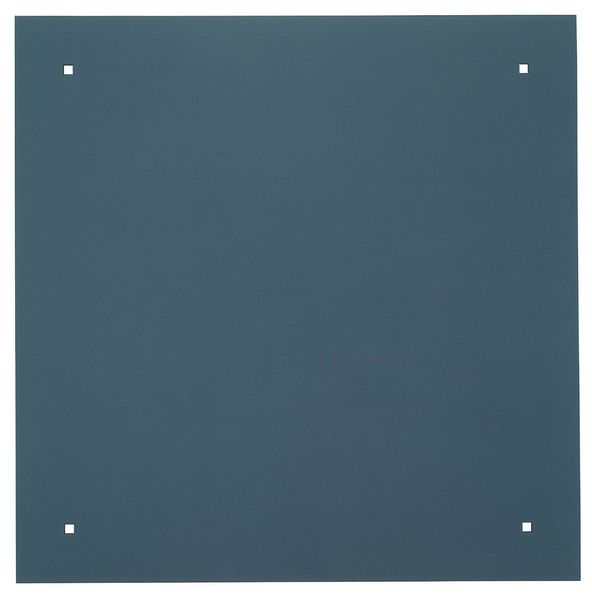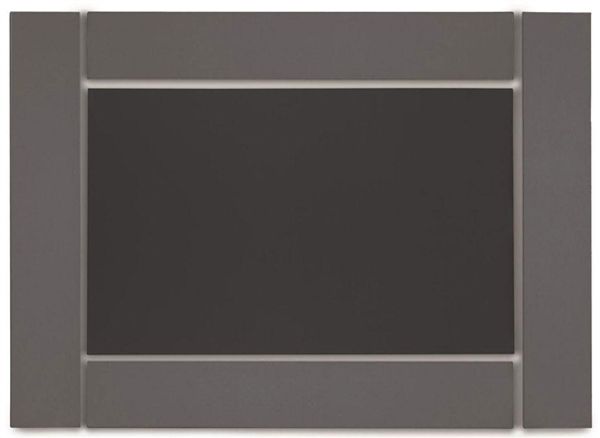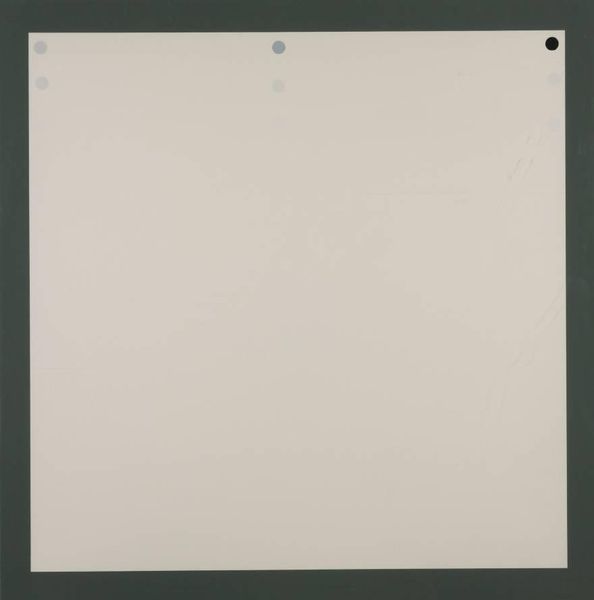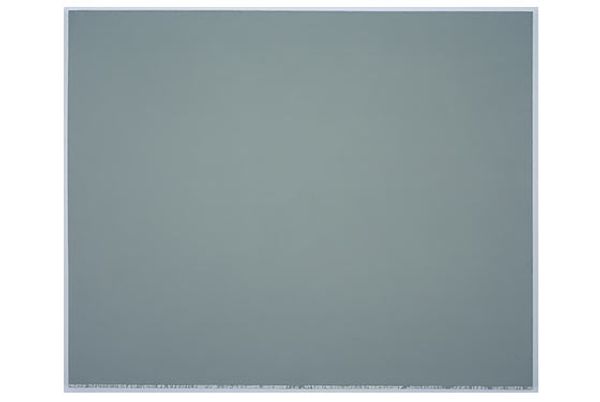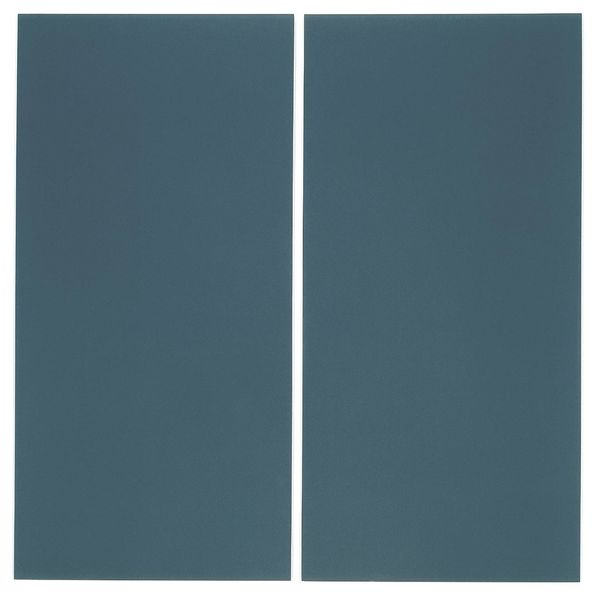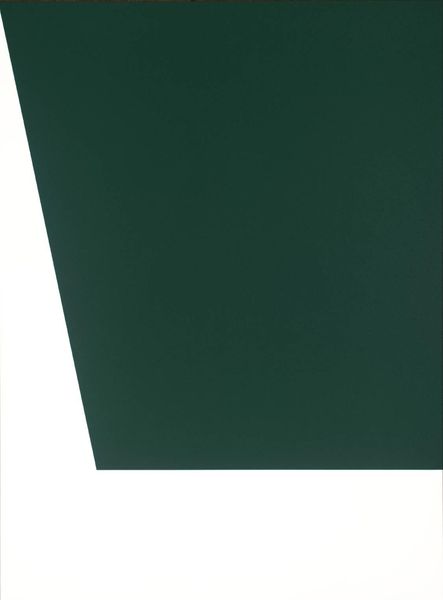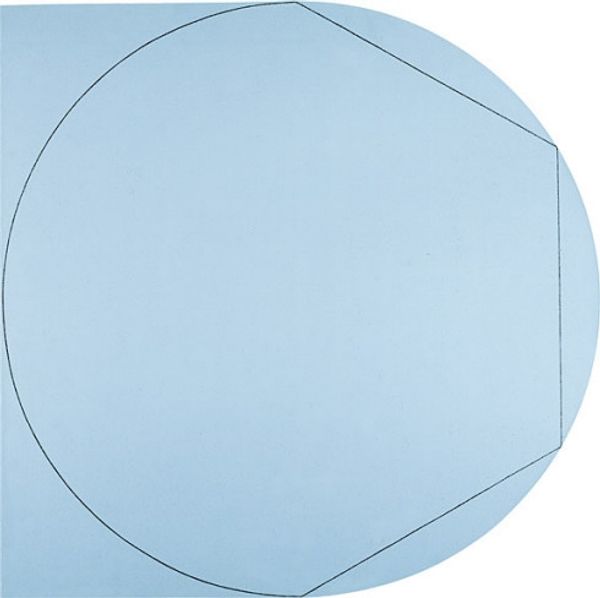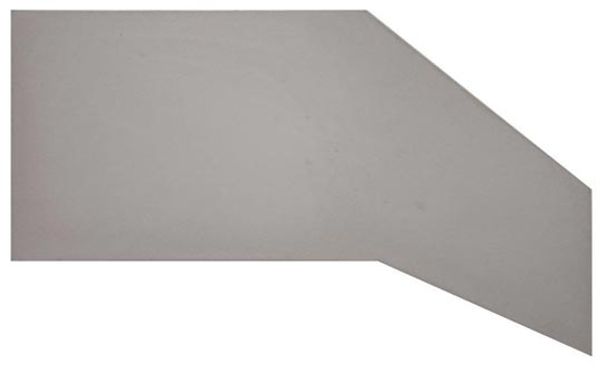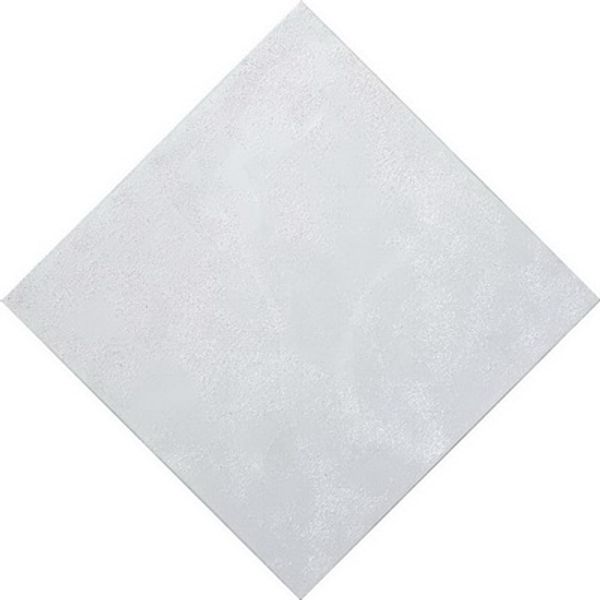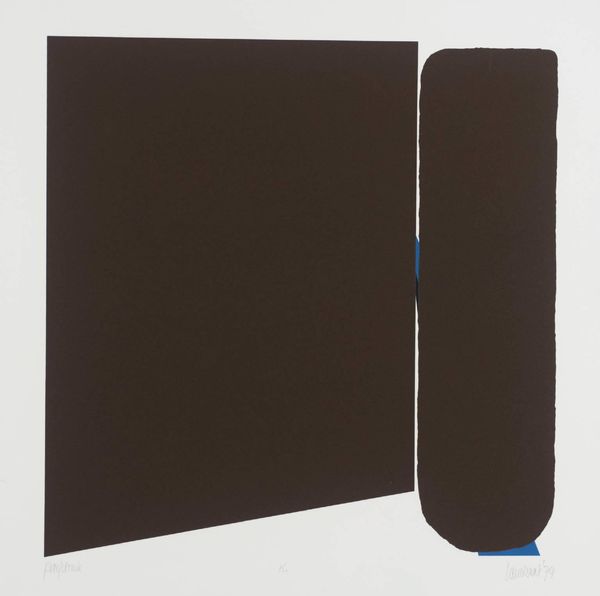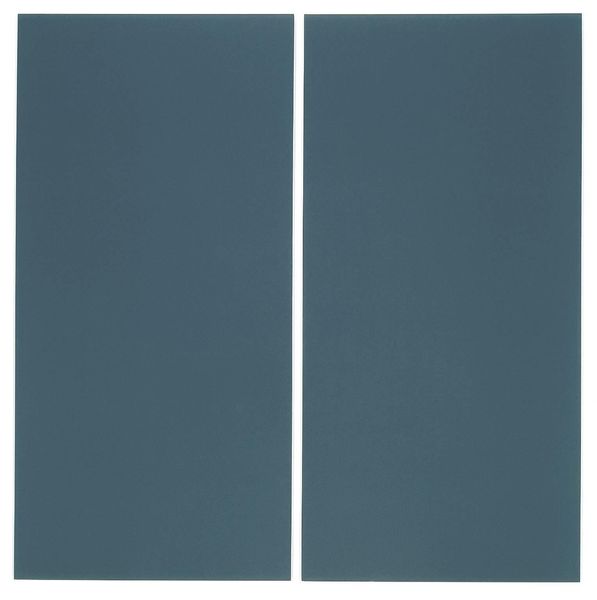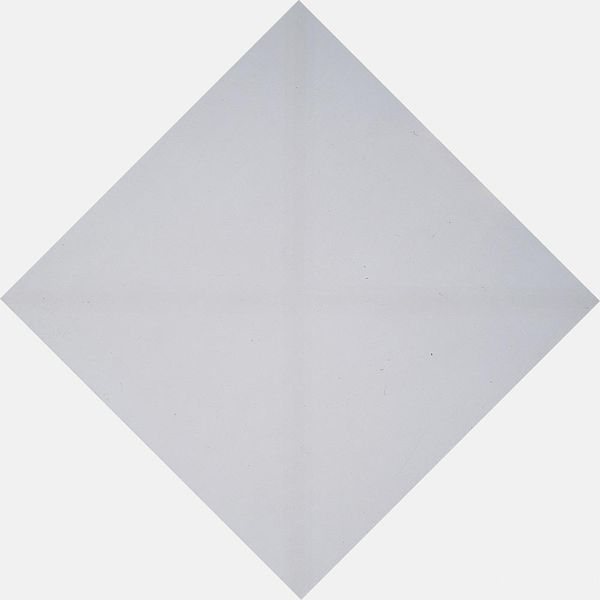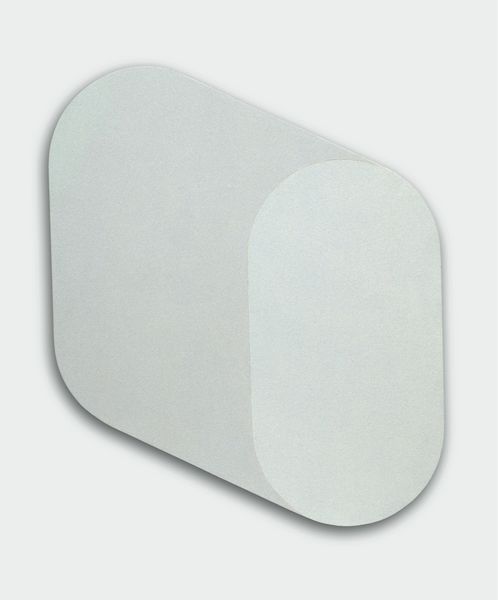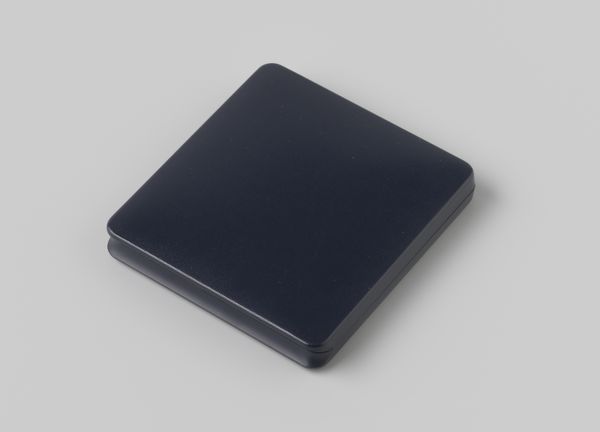
Dimensions: support: 2655 x 2655 x 45 mm
Copyright: © Alan Charlton | CC-BY-NC-ND 4.0 DEED, Photo: Tate
Curator: We're looking at Alan Charlton's, "Painting with Four Square Holes," part of the Tate collection. The support is a square measuring over two and a half meters on each side. Editor: It’s… subdued. I find the muted grey-blue rather calming, though the four small squares disrupt the otherwise consistent surface. Curator: Charlton's work often provokes discussion about the role of the gallery space itself, doesn't it? How does a monochrome painting interact with, even challenge, the architecture? Editor: Absolutely. The precise geometry and scale invite contemplation of the interplay between figure and ground, presence and absence. The squares… they create a visual rhythm. Curator: It's also interesting to consider the socio-political context in which minimalist art gained prominence, a time of questioning established norms. Editor: Perhaps, but for me, the focus is on how this simple configuration evokes such a profound sense of serenity through purely visual means. Curator: An interesting contrast. It really showcases how art can foster diverse interpretations. Editor: Indeed. It encourages us to consider the essence of perception itself.
Comments
tate 7 months ago
⋮
http://www.tate.org.uk/art/artworks/charlton-painting-with-four-square-holes-t07451
Join the conversation
Join millions of artists and users on Artera today and experience the ultimate creative platform.
tate 7 months ago
⋮
Painting with Four Square Holes 1991 is a very large square grey painting, measuring over two and a half metres in height and width, in which a small square section is cut out in each of the four corners of the canvas. Thin layers of opaque grey acrylic paint cover the whole work, including the sides of the canvas and the inside edges of the cut-out sections, and the paint has been applied in even brushstrokes to produce a uniform surface. The square cut-outs, which are 4.5 cm in dimension, are each positioned at an identical distance from their respective corners, lending a symmetry to the overall composition.
